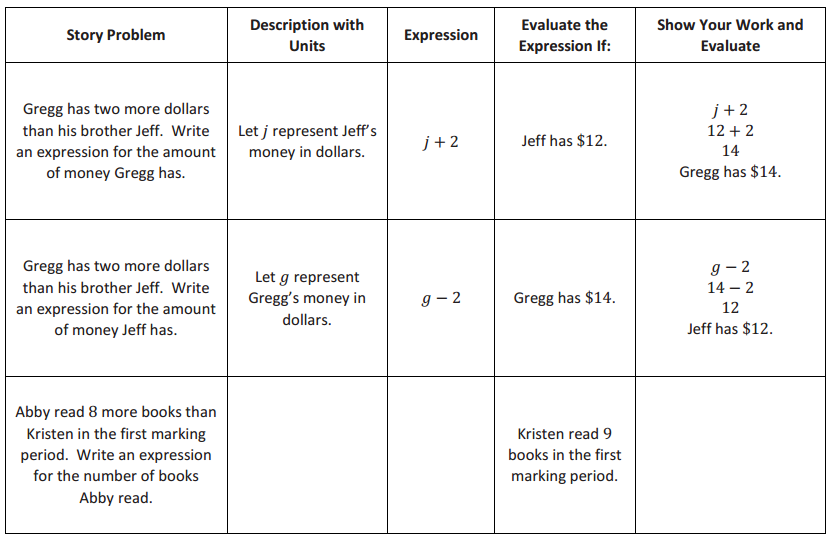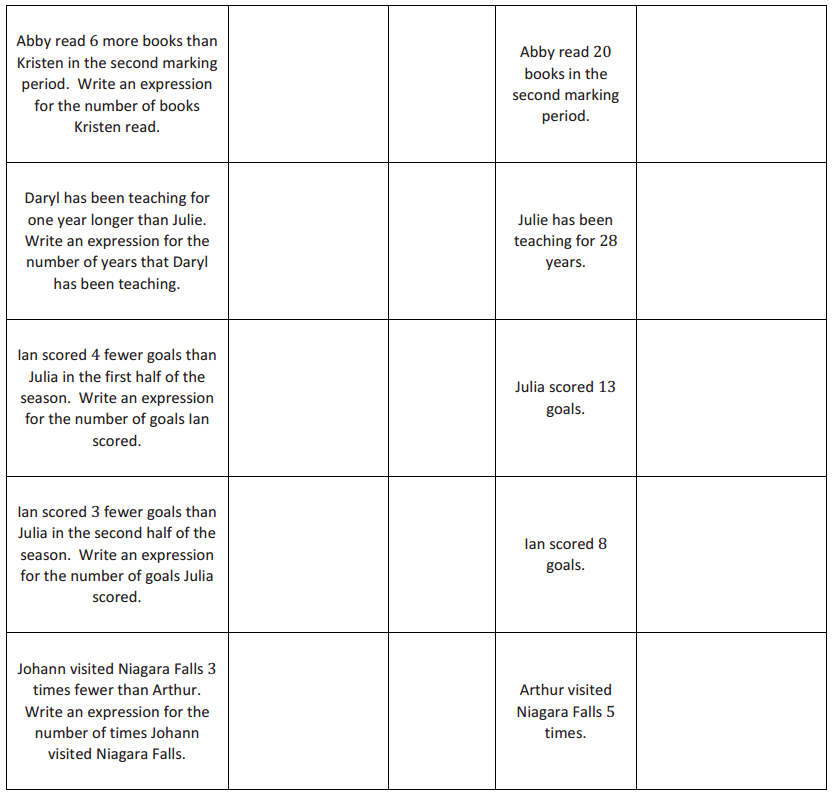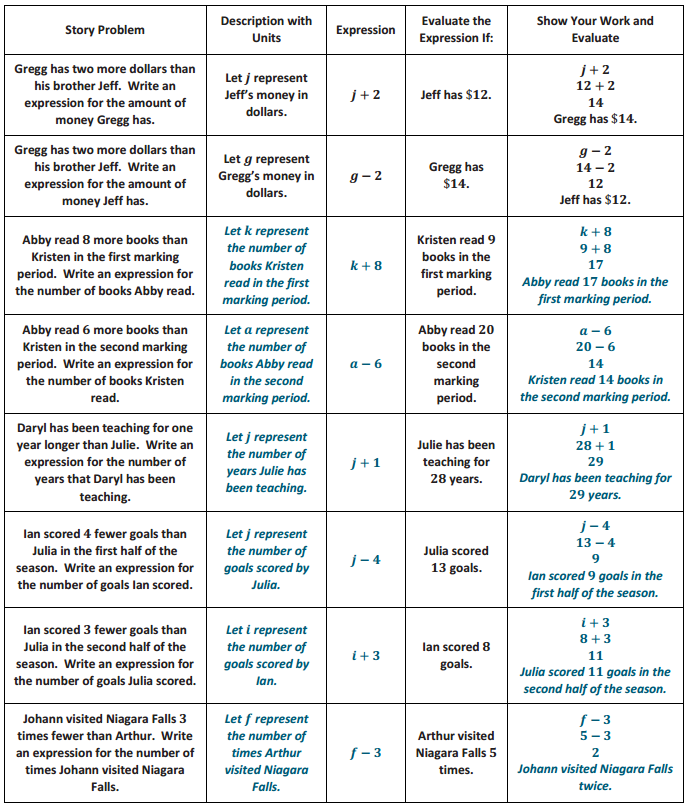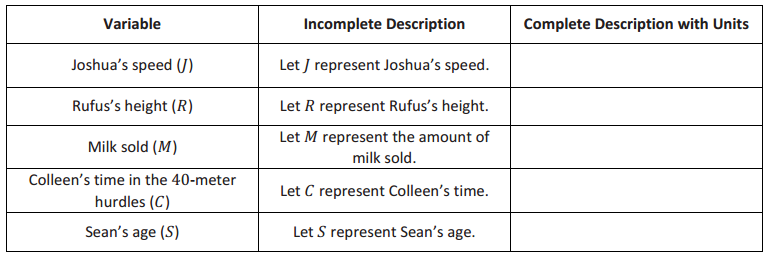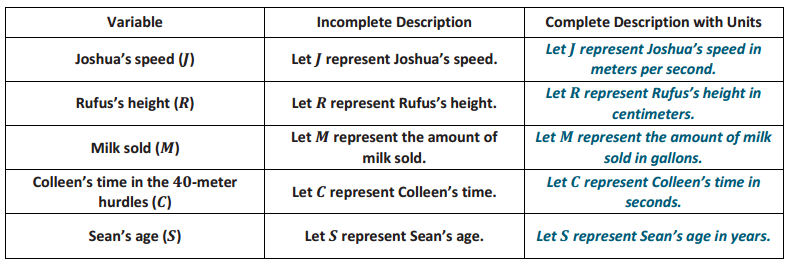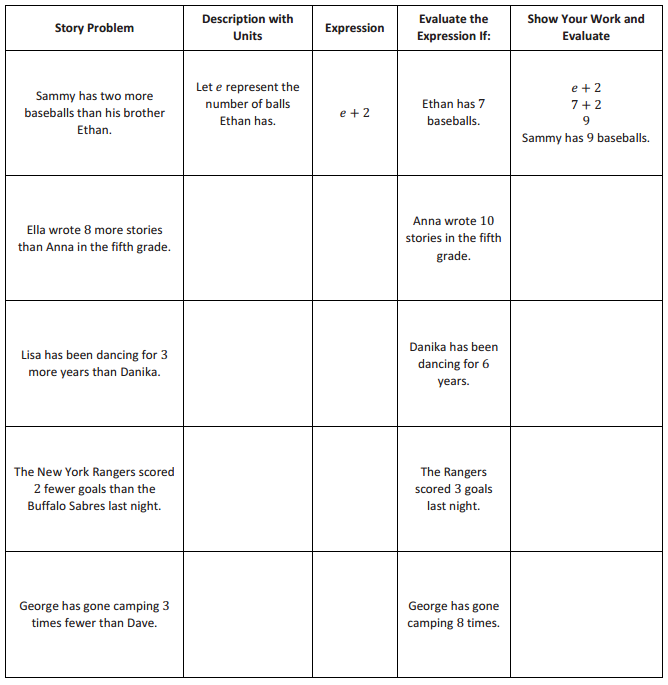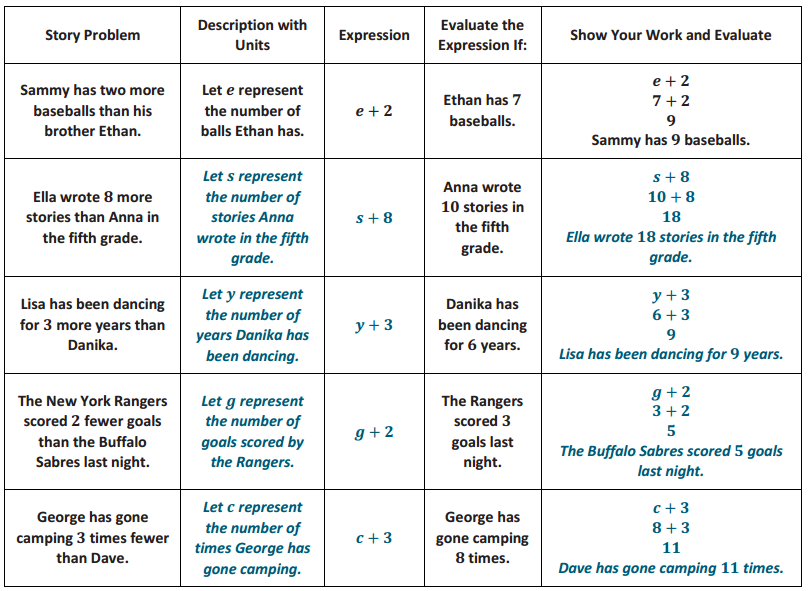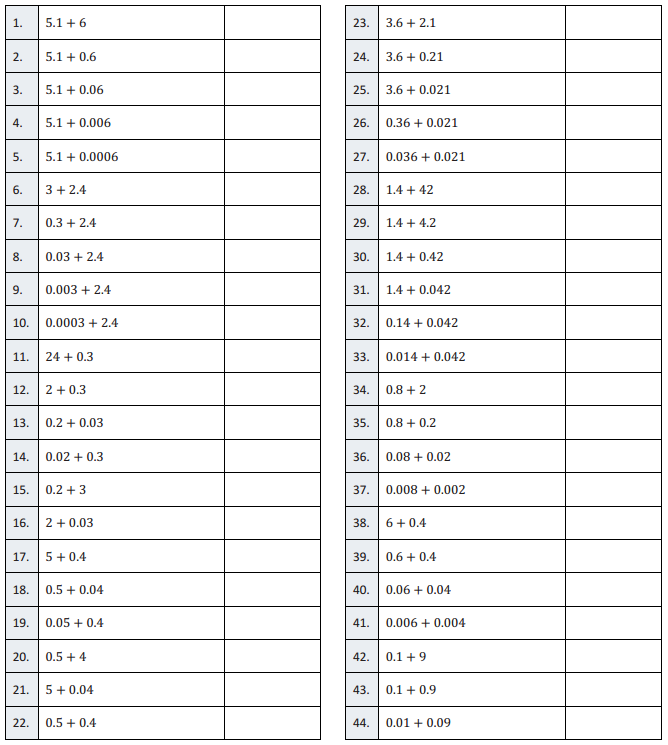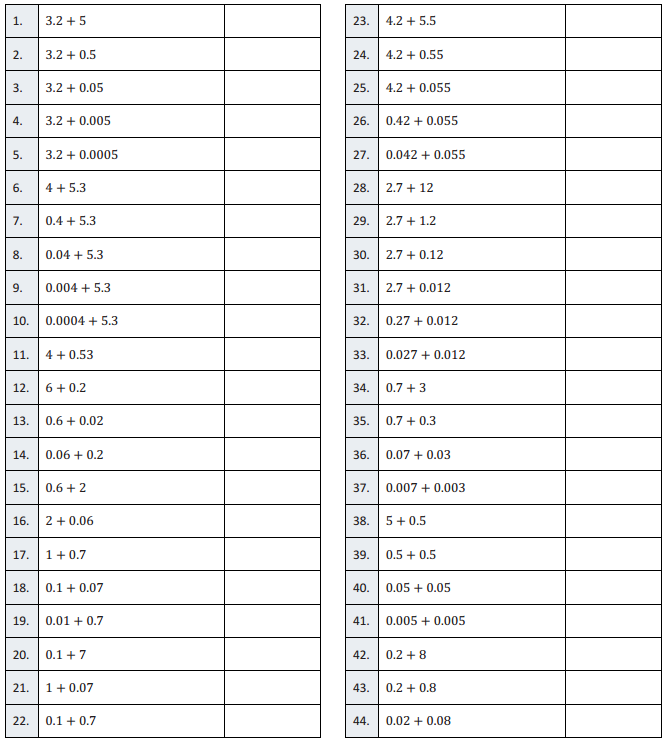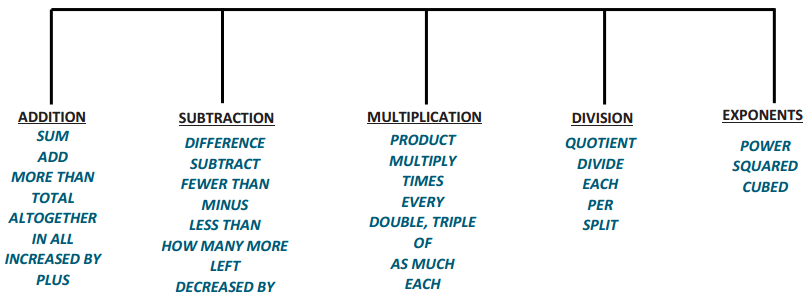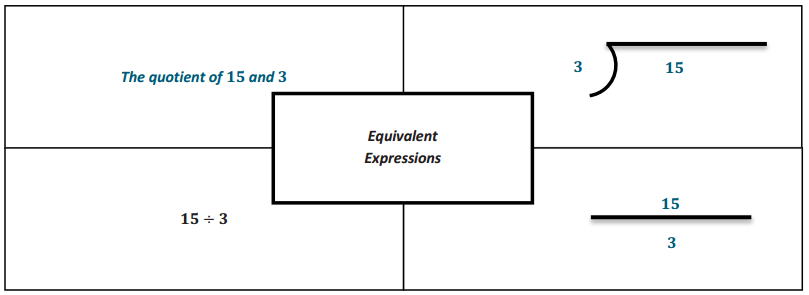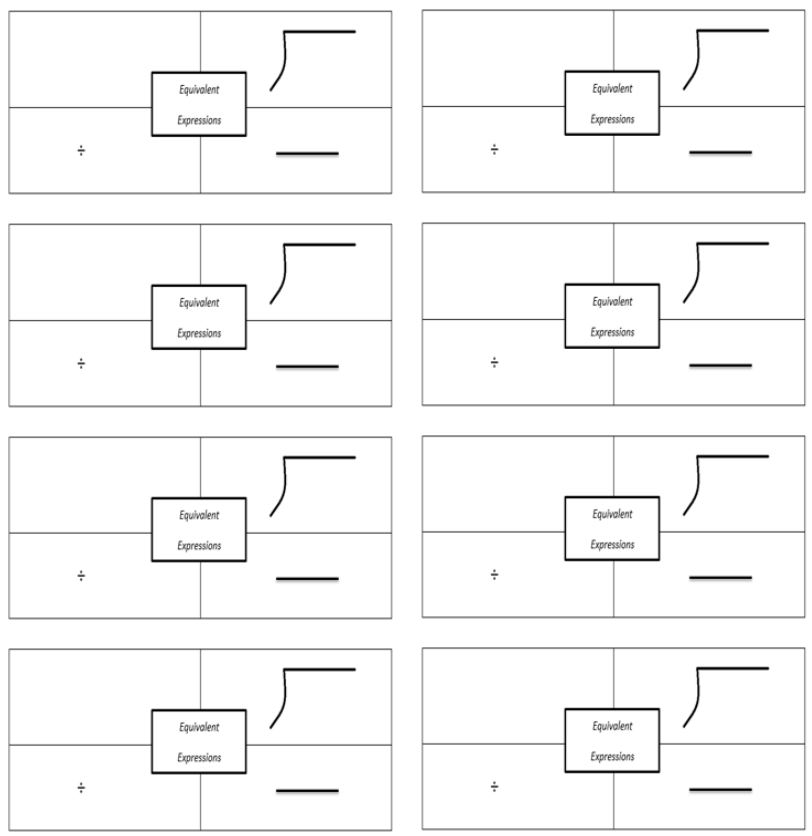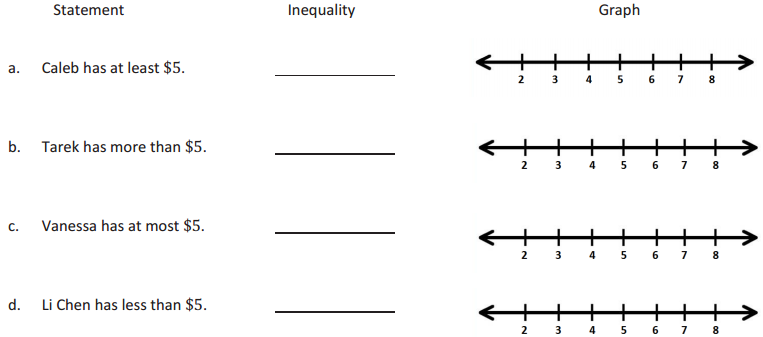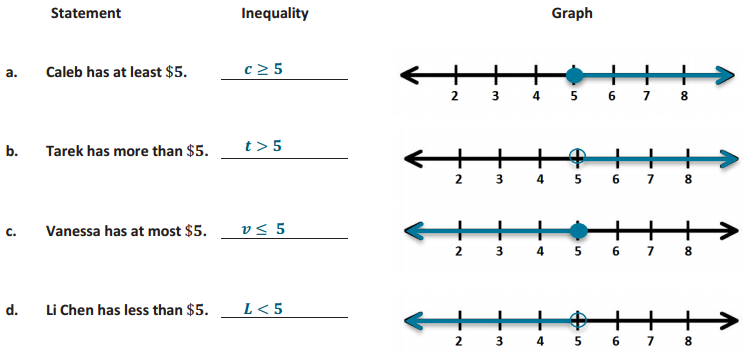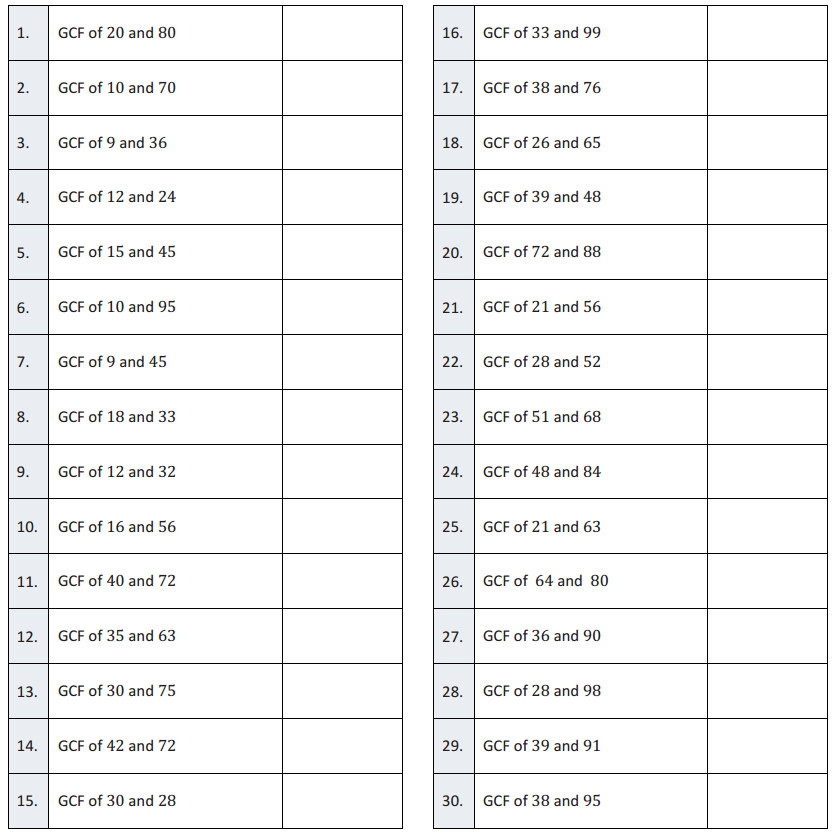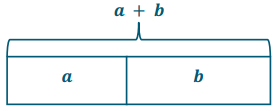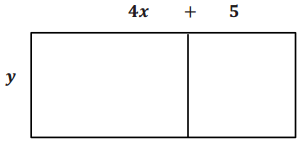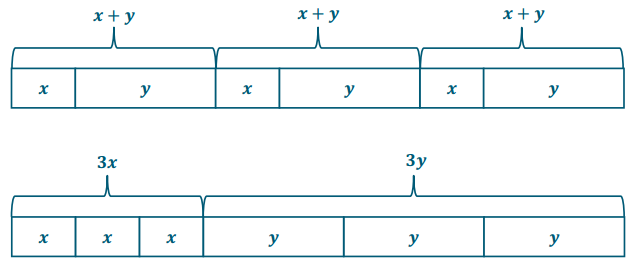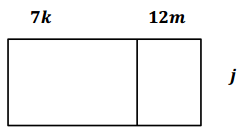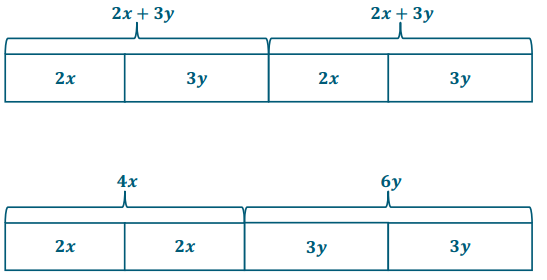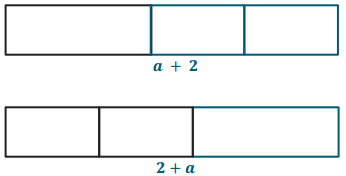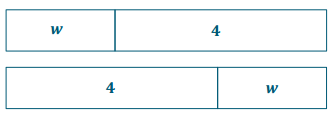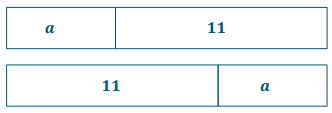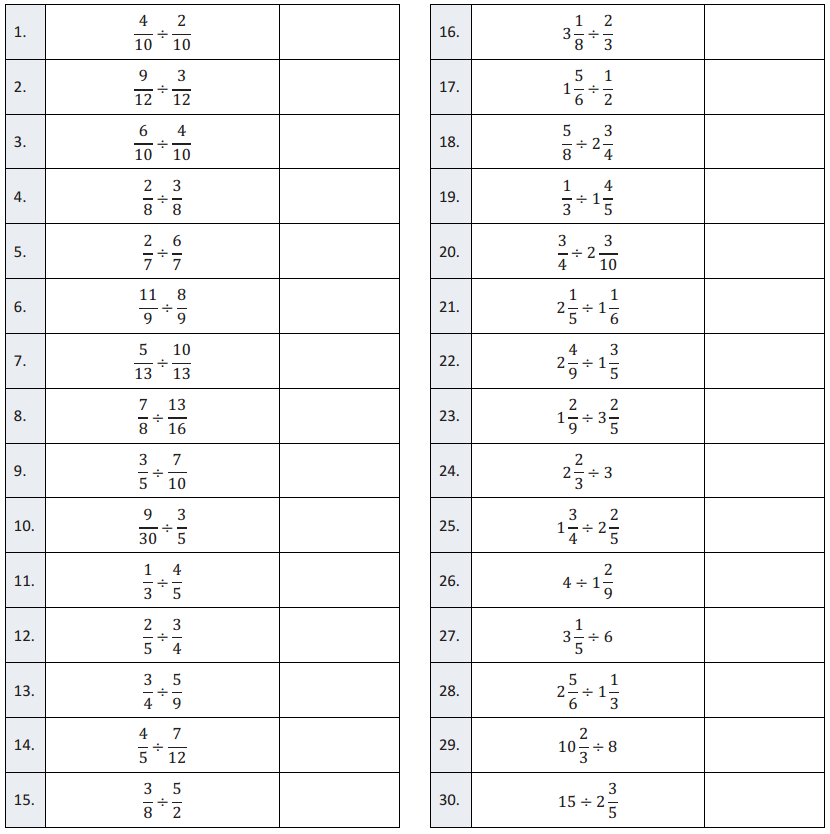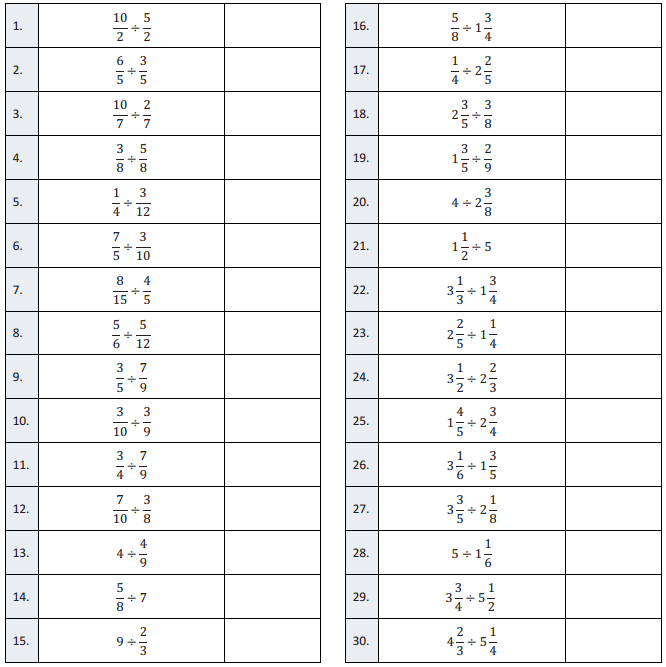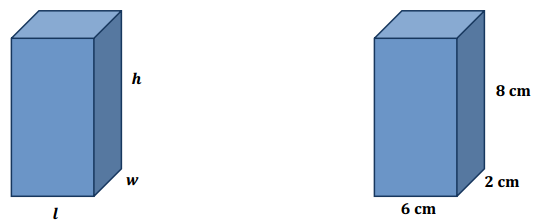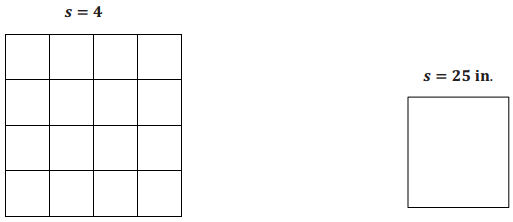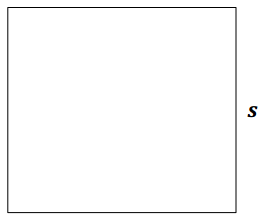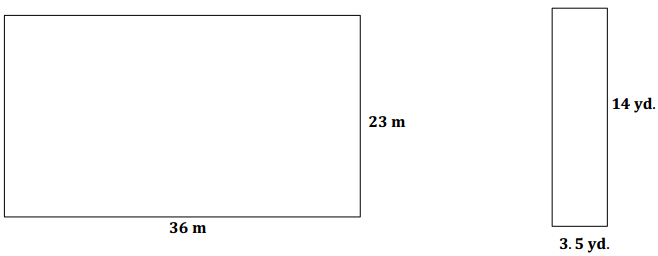Engage NY Eureka Math 6th Grade Module 4 Lesson 19 Answer Key
Eureka Math Grade 6 Module 4 Lesson 19 Example Answer Key
Example 1.
| My Age (in years) | My Sister’s |
| 0 | 2 |
| 1 | 3 |
| 2 | 4 |
| 3 | 5 |
| 4 | 6 |
| |
Answer:
| My Age (in years) | My Sister’s |
| 0 | 2 |
| 1 | 3 |
| 2 | 4 |
| 3 | 5 |
| 4 | 6 |
| Y | Y + 2 |
a. What if you don’t know how old I am? Let’s use a variable for my age. Let Y = my age In years. Can you
develop an expression to describe how old my sister is?
Answer:
Your sister is Y + 2 years old.
b. Please add that to the last row of the table.
Answer:
My age is Y years. My sister is Y + 2 years old. So, no matter what my age is (or was), my sister’s age in years will always be two years greater than mine.
Example 2.
| My Age (in years) | My Sister’s |
| 0 | 2 |
| 1 | 3 |
| 2 | 4 |
| 3 | 5 |
| 4 | 6 |
| |
Answer:
| My Age (in years) | My Sister’s |
| 0 | 2 |
| 1 | 3 |
| 2 | 4 |
| 3 | 5 |
| 4 | 6 |
| G – 2 | G |
a. How old was I when my sister was 6 years old?
Answer:
4 years old
b. How old was I when my sister was 15 years old?
Answer:
13 years old
c. How do you know?
Answer:
My age is always 2 years less than my sister’s age.
d. Look at the table in Example 2. If you know my sister’s age, can you determine my age?
Answer:
We can subtract two from your sister’s age, and that will equal your age.
e. If we use the variable G for my sister’s age in years, what expression would describe my age in years?
Answer:
G – 2
f. Fill in the last row of the table with the expressions.
Answer:
My age is G – 2 years. My sister is G years old.
g. With a partner, calculate how old I was when my sister was 22, 23, and 24 years old.
Answer:
You were 20, 21, and 22 years old, respectively.
Eureka Math Grade 6 Module 4 Lesson 19 Exercise Answer Key
Exercise 1.
Noah and Carter are collecting box tops for their school. They each bring in 1 box top per day starting on the first day of school. However, Carter had a head start because his aunt sent him 15 box tops before school began. Noah’s grandma saved 10 box tops, and Noah added those on his first day.
a. Fill in the missing values that indicate the total number of box tops each boy brought to school.
| Shool day | Number of Box Tops Noah Has | Number of Box Tops Carter Has |
| 1 | 11 | 16 |
| 2 | | |
| 3 | | |
| 4 | | |
| 5 | | |
Answer:
| Shool day | Number of Box Tops Noah Has | Number of Box Tops Carter Has |
| 1 | 11 | 16 |
| 2 | 12 | 17 |
| 3 | 13 | 18 |
| 4 | 14 | 19 |
| 5 | 15 | 20 |
b. If we let D be the number of days since the new school year began, on day D of school, how many box tops will Noah have brought to school?
Answer:
D + 10 box tops
c. On day D of school, how many box tops will Carter have brought to school?
Answer:
D + 15 box tops
d. On day 10 of school, how many box tops will Noah have brought to school?
Answer:
10 + 10 = 20; On day 10, Noah would have brought in 20 box tops.
e. On day 10 of school, how many box tops will Carter have brought to school?
Answer:
10 + 15 = 25; on day 10, Carter would have brought in 25 box tops.
Exercise 2.
Each week the Primary School recycles 200 pounds of paper. The Intermediate School also recycles the same amount but had another 300 pounds left over from summer school. The Intermediate School custodian added this extra 300 pounds to the first recycle week.
a. Number the weeks, and record the amount of paper recycled by both schools.

Answer:
| Week | Total Amount of Paper Recycled by the Primary School This School Year in Pounds | Total Amount of Paper Recycled by the Intermediate School This School Year in Pounds |
| 1 | 200 | 500 |
| 2 | 400 | 700 |
| 3 | 600 | 900 |
| 4 | 800 | 1,100 |
| 5 | 1,000 | 1,300 |
b. If this trend continues, what will be the total amount collected for each school on Week 10?
Answer:
The Primary School will have collected 2,000 pounds. The Intermediate School will have collected 2,300 pounds.
Exercise 3.
Shelly and Kristen share a birthday, but Shelly is 5 years older.
a. Make a table showing their ages every year, beginning when Kristen was born.

Answer:
| Kristen’s Age (in years) | Shelly’s Age (in years) |
| 0 | 5 |
| 1 | 6 |
| 2 | 7 |
| 3 | 8 |
b. If Kristen is 16 years old, how old is Shelly?
Answer:
If Kristen is 16 years old, Shelly is 21 years old.
c. If Kristen is K years old, how old is Shelly?
Answer:
If Kristen is K years old, Shelly is K + 5 years old.
d. If Shelly is S years old, how old is Kristen?
Answer:
If Shelly is S years old, Kristen is S – 5 years old.
Eureka Math Grade 6 Module 4 Lesson 19 Problem Set Answer Key
Question 1.
Suellen and Tara are in sixth grade, and both take dance lessons at Twinkle Toes Dance Studio. This Is Suellen’s first year, while this is Tara’s fifth year of dance lessons. Both girls plan to continue taking lessons throughout high school.
a. Complete the table showing the number of years the girls will have danced at the studio.
| Grade | Suellen’s Years of Experience Dancing | Tara’s Years of Experience Dancing |
| Sixth | | |
| Seventh | | |
| Eighth | | |
| Ninth | | |
| Tenth | | |
| Eleventh | | |
| Twelfth | | |
Answer:
| Grade | Suellen’s Years of Experience Dancing | Tara’s Years of Experience Dancing |
| Sixth | 1 | 5 |
| Seventh | 2 | 6 |
| Eighth | 3 | 7 |
| Ninth | 4 | 8 |
| Tenth | 5 | 9 |
| Eleventh | 6 | 10 |
| Twelfth | 7 | 11 |
b. If Suellen has been taking dance lessons for Y years, how many years has Tara been taking lessons?
Answer:
Tara has been taking dance lessons for Y + 4 years.
Question 2.
Daejoy and Damian collect fossils. Before they went on a fossil-hunting trip, Daejoy had 25 fossils in her collection, and Damian had 16 fossils In his collection. On a 10-day fossil-hunting trIp, they each collected 2 new fossils each day.
a. Make a table showing how many fossils each person had In their collection at the end of each day.
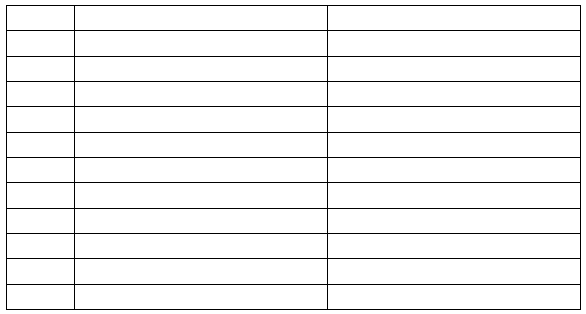
Answer:
| Day | Number of Fossils in Daejoy’s Collection | Number of Fossils in Damian’s Collection |
| 1 | 27 | 18 |
| 2 | 29 | 20 |
| 3 | 31 | 22 |
| 4 | 33 | 24 |
| 5 | 35 | 26 |
| 6 | 37 | 28 |
| 7 | 39 | 30 |
| 8 | 41 | 32 |
| 9 | 43 | 34 |
| 10 | 45 | 36 |
b. If this pattern of fossil finding continues, how many fossils does Damian have when Daejoy has F fossils?
Answer:
When Daejoy has F fossils, Damian has F – 9 fossils.
c. If this pattern of fossil finding continues, how many fossils does Damian have when Daejoy has 55 fossils?
Answer:
55 – 9 = 46
When Daejoy has 55 fossils, Damian has 46 fossils.
Question 3.
A train consists of three types of cars: box cars, an engine, and a caboose. The relationship among the types of cars is demonstrated in the table below.
| Number of Box Cars | Number of cars in the Train |
| 0 | 2 |
| 1 | 3 |
| 2 | 4 |
| 10 | 12 |
| 100 | 102 |
a. Tom wrote an expression for the relationship depicted in the table as B + 2. Theresa wrote an expression for the same relationship as C – 2. Is It possible to have two different expressions to represent one relationship? Explain.
Answer:
Both expressions can represent the same relationship, depending on the point of view. The expression B + 2 represents the number of box cars plus an engine and a caboose. The expression C – 2 represents the whole car length of the train, less the engine and caboose.
b. What do you think the variable in each student’s expression represents? How would you define them?
Answer:
The variable C would represent the total cars in the train. The variable B would represent the number of box cars.
Question 4.
David was 3 when Marieka was born. Complete the table.
| Marieka’s Age in years | David’s Age in years |
| 5 | 8 |
| 6 | 9 |
| 7 | 10 |
| 8 | 11 |
| 10 | |
| 20 |
| 32 | |
| M | |
| D |
Answer:
| Marieka’s Age in years | David’s Age in years |
| 5 | 8 |
| 6 | 9 |
| 7 | 10 |
| 8 | 11 |
| 10 | 13 |
| 17 | 20 |
| 32 | 35 |
| M | M + 3 |
| D – 3 | D |
Question 5.
Caitlln and Michael are playing a card game. In the first round, Caitlin scored 200 points, and Michael scored 175 points. In each of the next few rounds, they each scored 50 points. Their score sheet is below.
| Caitlln’s Points | Michael’s Points |
| 200 | 175 |
| 250 | 225 |
| 300 | 275 |
| 350 | 352 |
a. If this trend continues, how many points will Michael have when Caitlin has 600 points?
Answer:
600 – 25 = 575
Michael will have 575 points.
b. If this trend continues, how many points will Michael have when Caitlin has C points?
Answer:
Michael will have C – 25 points.
c. If this trend continues, how many points will Caitlin have when Michael has 975 points?
Answer:
975 + 25 = 1000
Caitlin will have 1,000 points.
d. If this trend continues, how many points will Caitlin have when Michael has M points?
Answer:
Caitlin will have M + 25 points.
Question 6.
The high school marching band has 15 drummers this year. The band director Insists that there are to be 5 more trumpet players than drummers at all times.
a. How many trumpet players are in the marching band this year?
Answer:
15 + 5 = 20. There are 20 trumpet players this year.
b. Write an expression that describes the relationship of the number of trumpet players (T) and the number of drummers (D).
Answer:
T = D + 5 or D = T – 5
c. If there are only 14 trumpet players interested in joining the marching band next year, how many drummers will the band director want In the band?
Answer:
14 – 5 = 9.
The band director will want 9 drummers.
Eureka Math Grade 6 Module 4 Lesson 19 Exit Ticket Answer Key
Jenna and Allie work together at a piano factory. They both were hired on January 3, but Jenna was hired in 2005, and Allie was hired in 2009.
a. Fill in the table below to summarize the two workers’ experience totals.
| Year | Allie’s Years of Experience | Jenna’s Years of Experience |
| 2010 | | |
| 2011 | | |
| 2012 | | |
| 2013 | | |
| 2014 | | |
Answer:
| Year | Allie’s Years of Experience | Jenna’s Years of Experience |
| 2010 | 1 | 5 |
| 2011 | 2 | 6 |
| 2012 | 3 | 7 |
| 2013 | 4 | 8 |
| 2014 | 5 | 9 |
b. If both workers continue working at the piano factory, when Allie has A years of experience on the job, how many years of experience will Jenna have on the job?
Answer:
Jenna will have been on the job for A + 4 years.
c. If both workers continue working at the piano factory, when Allie has 20 years of experience on the job, how many years of experience will Jenna have on the job?
Answer:
20 + 4 = 24
Jenna will have been on the job for 24 years.
Eureka Math Grade 6 Module 4 Lesson 19 Opening Exercise Answer Key
My older sister is exactly two years older than I am. Sharing a birthday is both fun and annoying. Every year on our birthday, we have a party, which is fun, but she always brags that she is two years older than I am, which is annoying. Shown below is a table of our ages, starting when I was born:
| My Age (in years) | My Sister’s |
| 0 | 2 |
| 1 | 3 |
| 2 | 4 |
| 3 | 5 |
| 4 | 6 |
a. Looking at the table, what patterns do you see? Tell a partner.
Answer:
My sister’s age is always two years more than my age.
b. On the day I turned 8 years old, how old was my sister?
Answer:
10 years old
c. How do you know?
Answer:
Since my sister’s age is always two years more than my age, we just add 2 to my age. 8 + 2 = 10
d. On the day I turned 16 years old, how old was my sister?
Answer:
18 years old
e. How do you know?
Answer:
Since my sister’s age is always two years more than my age, we just add 2 to my age. 16 + 2 = 18
f. Do we need to extend the table to calculate these answers?
Answer:
No; the pattern is to add 2 to your age to calculate your sister’s age.
Eureka Math Grade 6 Module 4 Lesson 19 Subtraction of Decimals Answer Key
Subtraction of Decimals – Round 1
Directions: Evaluate each expression.
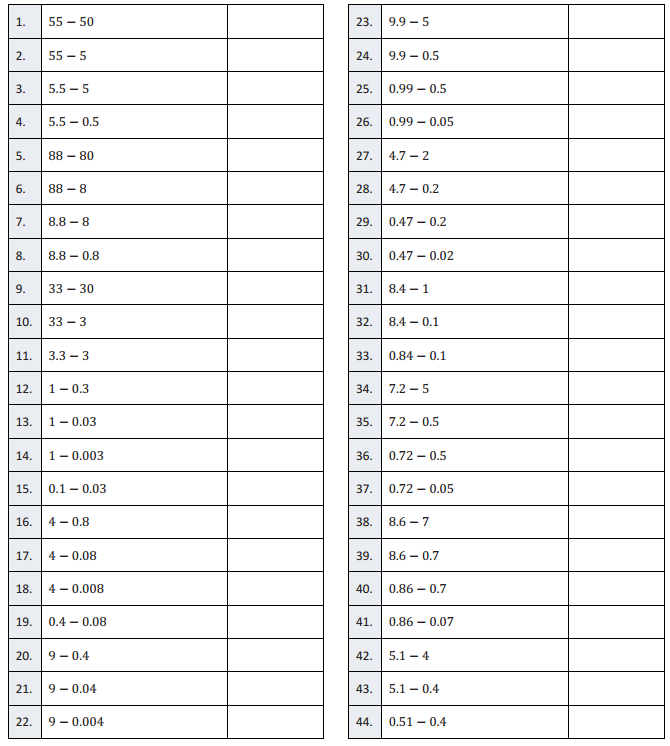
Question 1.
55 – 50
Answer:
5
Question 2.
55 – 5
Answer:
50
Question 3.
5.5 – 5
Answer:
0.5
Question 4.
5.5 – 0.5
Answer:
5
Question 5.
88 – 80
Answer:
8
Question 6.
88 – 8
Answer:
80
Question 7.
8.8 – 8
Answer:
0.8
Question 8.
8.8 – 0.8
Answer:
8
Question 9.
33 – 30
Answer:
3
Question 10.
33 – 3
Answer:
30
Question 11.
3.3 – 3
Answer:
0.3
Question 12.
1 – 0.3
Answer:
0.7
Question 13.
1 – 0.03
Answer:
0.97
Question 14.
1 – 0.003
Answer:
0.997
Question 15.
0.1 – 0.03
Answer:
0.07
Question 16.
4 – 0.8
Answer:
3.2
Question 17.
4 – 0.08
Answer:
3.92
Question 18.
4 – 0.008
Answer:
3.992
Question 19.
0.4 – 0.08
Answer:
0.32
Question 20.
9 – 0.4
Answer:
8.6
Question 21.
9 – 0.04
Answer:
8.96
Question 22.
9 – 0.004
Answer:
8.996
Question 23.
9.9 – 5
Answer:
4.9
Question 24.
9.9 – 0.5
Answer:
9.4
Question 25.
0.99 – 0.5
Answer:
0.49
Question 26.
0.99 – 0.05
Answer:
0.94
Question 27.
4.7 – 2
Answer:
2.7
Question 28.
4.7 – 0.2
Answer:
4.5
Question 29.
0.47 – 0.2
Answer:
0.27
Question 30.
0.47 – 0.02
Answer:
0.45
Question 31.
8.4 – 1
Answer:
7.4
Question 32.
8.4 – 0.1
Answer:
8.3
Question 33.
0.84 – 0.1
Answer:
0.74
Question 34.
7.2 – 5
Answer:
2.2
Question 35.
7.2 – 0.5
Answer:
6.7
Question 36.
0.72 – 0.5
Answer:
0.22
Question 37.
0.72 – 0.05
Answer:
0.67
Question 38.
8.6 – 7
Answer:
1.6
Question 39.
8.6 – 0.7
Answer:
7.9
Question 40.
0.86 – 0.7
Answer:
0. 16
Question 41.
0.86 – 0.07
Answer:
0.79
Question 42.
5.1 – 4
Answer:
1.1
Question 43.
5.1 – 0.4
Answer:
4.7
Question 44.
0.51 – 0.4
Answer:
0.11
Subtraction of Decimals – Round 2
Directions: Evaluate each expression.
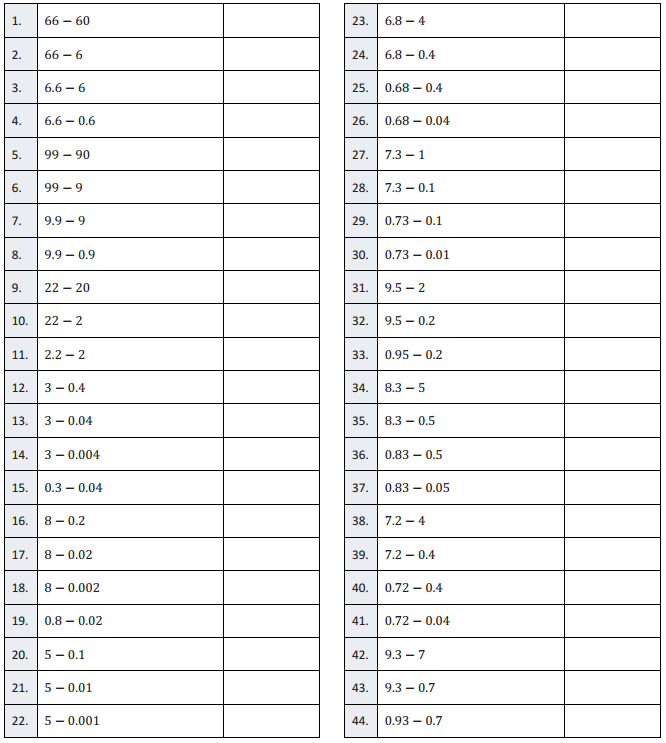
Question 1.
66 – 60
Answer:
6
Question 2.
66 – 6
Answer:
60
Question 3.
6.6 – 6
Answer:
0.6
Question 4.
6.6 – 0.6
Answer:
6
Question 5.
99 – 90
Answer:
9
Question 6.
99 – 9
Answer:
90
Question 7.
9.9 – 9
Answer:
0.9
Question 8.
9.9 – 0.9
Answer:
9
Question 9.
22 – 20
Answer:
2
Question 10.
22 – 2
Answer:
20
Question 11.
2.2 – 2
Answer:
0.2
Question 12.
3 – 0.4
Answer:
2.6
Question 13.
3 – 0.04
Answer:
2.96
Question 14.
3 – 0.004
Answer:
2.996
Question 15.
0.3 – 0.04
Answer:
0.26
Question 16.
8 – 0.2
Answer:
7.8
Question 17.
8 – 0.02
Answer:
7.98
Question 18.
8 – 0.0 02
Answer:
7.998
Question 19.
0.8 – 0.02
Answer:
0.78
Question 20.
5 – 0.1
Answer:
4.9
Question 21.
5 – 0.01
Answer:
4.99
Question 22.
5 – 0.001
Answer:
4.999
Question 23.
6.8 – 4
Answer:
2.8
Question 24.
6.8 – 0.4
Answer:
6.4
Question 25.
0.68 – 0.4
Answer:
0.28
Question 26.
0.68 – 0.04
Answer:
0.64
Question 27.
7.3 – 1
Answer:
6.3
Question 28.
7.3 – 0.1
Answer:
7.2
Question 29.
0.73 – 0.1
Answer:
0.63
Question 30.
0.73 – 0.01
Answer:
0.72
Question 31.
9.5 – 2
Answer:
7.5
Question 32.
9.5 – 0.2
Answer:
9.3
Question 33.
0.95 – 0.2
Answer:
0.75
Question 34.
8.3 – 5
Answer:
3.3
Question 35.
8.3 – 0.5
Answer:
7.8
Question 36.
0.83 – 0.5
Answer:
0.33
Question 37.
0.83 – 0.05
Answer:
0.78
Question 38.
7.2 – 4
Answer:
3.2
Question 39.
7.2 – 0.4
Answer:
6.8
Question 40.
0.72 – 0.4
Answer:
0.32
Question 41.
0.72 – 0.04
Answer:
0.68
Question 42.
9.3 – 7
Answer:
2.3
Question 43.
9.3 – 0.7
Answer:
8.6
Question 44.
0.93 – 0.7
Answer:
0.23





